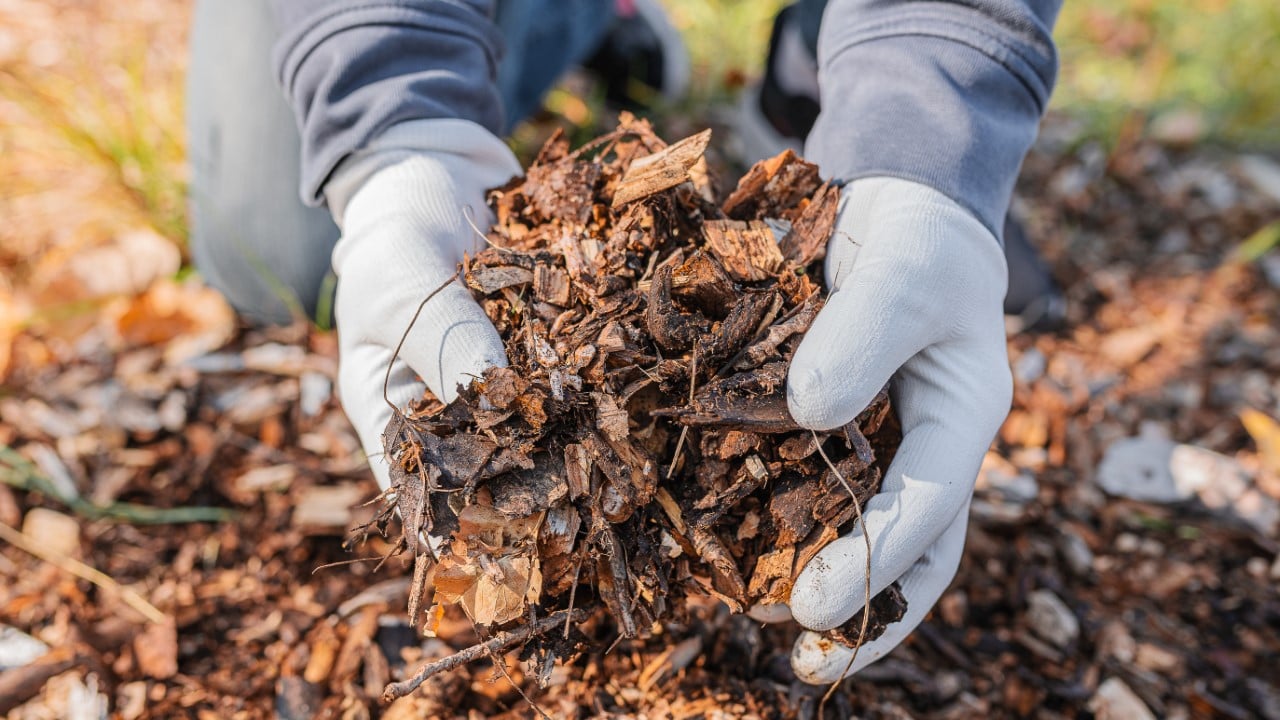AFFILIATE MARKETING
Farmers Growing Their Wealth: Harvesting Free Time To Grow More Than Crops

People associate land ownership and working the land with farming and agriculture. Although this isn’t inaccurate, there’s a lot more to owning land than farming.
Some ranchers work with cattle and horses. Some host events with picturesque venues. Others farm part of their land and offer Airbnb experiences — a daytime activity or extended stay in an old train or cozy cabin. Zoning and owners set the bar for profit.
Some assume farmers only want to farm, yet agriculture only yields so much profit. Even though many landowners don’t look at farming as a profit mill, most can’t work the land at 80 years of age.
Self-sufficient living appeals to many, but many people consider it overwhelming. Independence appeals to many, yet “giving it all up” isn’t realistic for those wanting to become more self-reliant. Is farming even possible for those who don’t own tons of land, say, only an acre?
Even if it is, farming on that small land would not benefit more than self-sufficiency, right? One lifelong farmer learned to maximize media while still working with his hands. A freelancer turned farm-preneur took the phrase “Grab life by the reins” literally.
Tilling the Fields for Maximum Yield: Derek Lancaster, the Build Wealth Farmer

Derek works on his family farm, Lancaster Farms, in North Carolina. He works well past full-time, with many weeks averaging 80 to 90 hours. Those are entrepreneurial levels, for sure! He explains his and his wife’s mindset on his website and Instagram.
“Being a full-time farmer working 90-hour weeks with a wife who’s a full-time teacher, inflation hit us hard. We went from a life of stable comfort to one of paycheck-to-paycheck stress, hoping to live the ‘American Dream.’”
Imagine working that much only to experience this level of financial strain. Unfortunately, inflation impacts most Americans. 21% of families and 67% of single adults lived paycheck to paycheck, according to LendingClub’s 2023 report. Lancaster doesn’t disclose debt. Living with no safety net is stressful, especially with two full-time providers, children, and significant assets to maintain (e.g., the family farm).
Most folks would find a new job, but that won’t be an option for Lancaster. Without selling land and moving closer to a city, there was no “finding a new job.” He chose to take a personal risk by trying a new, alternative income stream.
Don’t Be Passive About Growing Wealth


Although wannabe financial influencers use phrases like passive income, it’s often a scam. In reality, earning income is never passive. Even with leverage income goods (e.g., ebooks, courses), setup and maintenance are often required. For folks with work weeks like Lancaster, these tempting scams rely on desperation.
Yet passive income, as defined by the Internal Revenue Service (IRS), only includes:
- Dividends, interest, and annuities
- Royalties
- Rents from real property and personal property leased with real property
- Gains from sales, exchanges, or other dispositions of property (with some exceptions)
- Sale of goods income without production, delivery, or inventory
These categories fall into the more reputable passive income programs sold online. Most of these programs and micro-influencers need to share how much time and energy it takes to build a business, even with passive income.
Fortunately, Lancaster is realistic — although initially doubtful.
“Being someone who works outside all day, I was skeptical that I could do this. But [affiliate marketing] was one of the most beginner-friendly routes I could take. So now I am here, sharing it with as many people as possible to show everyone that you can do this, no matter your background.”
For anyone versed in digital marketing, sound, profitable affiliate marketing takes a lot of time and effort. To Lancaster’s credit, he’s used to a long workweek and is quite the workhorse, so taking on more work seems simple enough.
Harvesting Free Time To Build Wealth


Living paycheck to paycheck, working 90 hours weekly, most would break under the stress. Lancaster felt differently.
“DONE with stressing over any financial obligations that we came across daily… [and] wanted the freedom to earn income online without the hassle of creating products, fulfilling orders, and handling customer service requests.”
Knowing what he had time for and what he didn’t want to do narrowed down his options. Extra time constraints of operating a farm and spending time with family clarified his options. For Lancaster, affiliate marketing stood out.
He converts a few hours into moneymakers with his skills and dedicated training and learning. On Instagram, he’s forthright with his profits. He’s also very upfront about how much work it takes to start and operate a business like this. Lancaster mentions that this is not passive income but requires dedicated attention.
It is effective, too; his account is manageable. He’s not out here trying to microinfluence with his farm. Instead, he uses affiliate marketing as a supplement to his primary income. The goal is to build up enough wealth that when he does want to retire, he has the option. Instead of being forced to work the land until he’s well into his twilight years, he’s giving himself and his wife a bigger future.
Building wealth during free time is the best use of that time. Instead of escaping from your 9-to-5 grind, use it to explore things that move you. As personal finance expert Michael Dinich suggests, “You gotta try junk.” That’s what free time is for, right?
Increasing profitability requires discipline and clarity. Lancaster’s other commitments limited him and laser-focused his priorities. This focus made it easier for him. To leverage free time and develop a side hustle into something profitable, others might have more work ahead of them.
There’s still hope for those who aren’t currently farmers or landowners! Self-sufficiency can be attained by achieving the work-life balance that comes with it.
Brand Building to Land Owning: Freelancer Turned Farm-preneur, Alexandra Fasulo


Social media makes it easy to find plenty of aesthetic content. Successful content creators play to their viewers’ visual appetites. Much content uses beautiful natural backgrounds and scenery, including vacation footage, rented space that was traveled to, or, in rarer cases, land owned by the creator.
Digital nomads work and love to feature the beautiful spaces they work from. Alexandra Fasulo did this. She taught others how to freelance and thrived off side gigs for a long time. She eventually tired of the digital nomad life and wanted to settle down. On one of her trips, she found a piece of property she fell in love with in upstate New York.
Although some discount her casual buy of 6.74 acres of land, it makes sense when you learn more about her reasoning. She purchased the land using capital, research, and the right loan. Why buy farmland with no prior experience?
Fasulo explains, “We all need to step up and start buying the land in this country before Wall Street does (it’s alarming). I know buying undeveloped land sounds scary. So, I will become the case study in my experiment of how you can turn even less than one acre into YOUR own money-making business.”
Although she’s coming from the reverse end of Lancaster’s experience, their goals are similar. She wanted to remain unfettered from financial stress and build a future that gave her flexibility. Many millennials and zoomers are tired of the 9-to-5 grind, even those who switch to self-employment.
Leveraging Freelancing Skills To Profit Off Farmland


It’s easy to judge the casualness with which Fasulo bought her land. Yet, she outlines her intention and ideas for purchasing it. Despite the haters, her purchasing process was well-researched.
She details how she found the land on Zillow. She also explains the various loan options available to her. Fasulo clarifies why she didn’t go with a USDA loan over a Farm Credit loan. She also provides alternative suggestions, knowing her financial background differs from others. She clarifies in one of her posts:
“I am using a Farm CREDIT loan, an offshoot of the USDA, NOT a traditional USDA loan. That’s why mine is 25% down, and other loans are NOT. I also DID NOT need to provide a business plan. There are a variety of ways to secure farmland if you want it. If you have $0, that’s ok. There’s $0 down USDA loans for lower-income households, communal farm purchasing, investing, etc.”
With my history as a freelance writer and my dream of owning land, her transparency about the process is refreshing. She doesn’t imitate a real estate, finance, or agriculture expert. Instead, she explains her motivation and goals and the process she’s taking to get there. She’s also fully aware of the mistakes she will make along the way.
Sharing her experience on social media gets her views and potential sponsorships. She leverages her former experience as a content writer to generate newsletters and maintain income, building up everything she has planned for the farmland.
Cultivating More Than Crops


Although a business plan was not required for her loan, many folks will not follow Fasulo’s route. Farm Credit required a much higher credit score and a 30% down payment, at least in her region. It’s important to look into regional differences because farmland is more valuable for different kinds of agriculture. Loan accommodations for lower income may be more forgiving depending on the demographics and economics in your area.
So far, Fasulo has yet to do much to the property. She closed on the land back in August of 2023. She’s discussed her land plans and made local connections to ease the construction. Although she focuses on sustainably profiting off her land, she still has to develop a lot of infrastructure and knowledge.
One smart move: connecting with local Amish people, whom she hired to build the road to access the back of the property. She also shopped their barn builds for the first structure on her property. They poured the pad for the barn as well.
Aside from a certified land surveyor, most of the physical labor on her land has been done by the Amish.
Knowing she needs to gain the physical skill and practical knowledge to do much of the work, Fasulo leverages her network. In this case, her network was her neighbors. That’s one of the beautiful things about landownership and working in agriculture. Farming communities trend towards interdependence. The mutual exchange of goods and services naturally occurs.
Becoming Financially and Agriculturally Self-Sufficient


Like many farm owners, Fasulo aims to profit off the land. She wants to set “an example of protecting the environment while making great money. I don’t see many people pursuing the same thing right now!”
After checking that it meets city zoning laws, she’s included a quick list of everything she plans to include on her land.
- Social media brand deals with green-forward companies
- Twitch streaming farm animals
- Plant sales from microgreens, mushrooms, and vertical farming
- Subscription boxes
- Event space for weddings, community, etc.
- Affiliate marketing
- Email newsletter with ad space
- Monetized YouTube posts of her process
- Quarterly courses for locals and visitors
All of the infrastructure needs to be built out. That will take a lot of time, and many mistakes will be made.
Fasulo is open to learning and growing, however. Making a big personal shift like this involves staying open-minded despite adversity. At the end of the day, as Lancaster showcases his lifestyle, working the land takes work. It’s simple, but it requires dedicated and consistent focus.
I look forward to seeing where Fasulo goes with this process and hope she sets a trend for those interested in self-sufficiency.
The Benefits of Self-Sufficient Living


As Lancaster shows, not everyone can hack the 90-hour work week plus side hustle. Only some people are built for the entrepreneur’s life. However, there is a way to incorporate your existing skills and acquire farmland. Fasulo addresses this a few times by highlighting how little space you need to farm. She’s not experienced like Lancaster, but accessible farming trends like hydroponics and vertical farming simplify growing.
Purchasing grow lights and building hydroponic towers for indoor farming is tough but still doable. Most farmers are independent and need help maintaining the cost of living, maintaining the land, and expanding their farms into a specific, profitable niche. It’s hard when all your working time focuses on caring for your crops or animals.
Work-life balance and self-sufficiency are critical for farmers. Those who have found a way, like Lancaster or Fasulo, are approaching income generation based on their values and necessities.
Leveraging the community can cut costs for any farmer, as Fasulo shows by turning to her local Amish. She can’t build the structures herself, but she can begin to invest more time and infrastructure and expand her ideas for profit.
Although Lancaster focused on affiliate marketing, Fasulo will work through different side hustles to determine the best income generators. Although she’s got a side gig as a marketing liaison for the Amish, I’m sure there’s more hustling she’s doing using her freelancer experience.
Farmers and freelancers can grow wealth by prioritizing work/life balance and embracing self-sufficiency. Explore the possibilities of achieving financial stability and free time through growing crops and building a life based on your values.


















